Art World
At IdeasCity Athens, Artists Present Alternative Futures
Many emotive questions were raised.
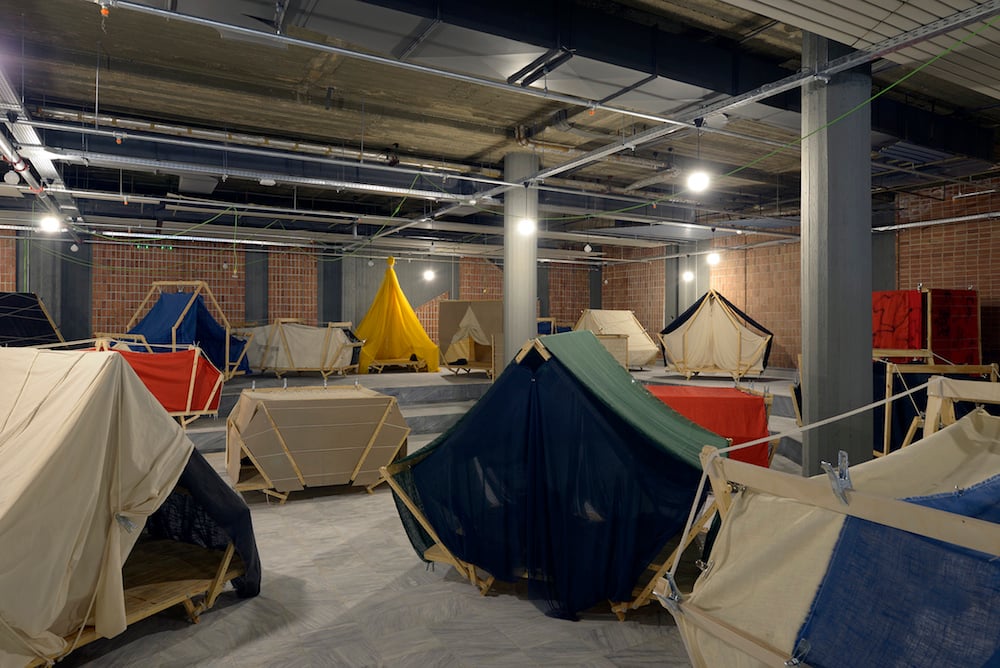
Many emotive questions were raised.

The IdeasCity Athens artist residency took place this past weekend in the second edition of the four-part, New Museum-backed project—partnered by NEON Greece—that started in Detroit, next heads to Arles in the South of France, and ends its run in New York, this time next year.
IdeasCity, headed up by architect Joseph Grima, stages artist residencies in cities with the aim of coming up with creative solutions for the particular problems that exist there. The results are then shared on a public day of discussions and talks in the city involving both the “fellows” who have taken part in the residency, and the artists who have been guiding the fellows through their process.
“The most effective way we can address the critical questions that the city embodies is by bringing it into dialogue with other cities and trying to create a discourse that can transcend the specificity of any single [place],” Grima explained to artnet News, also emphasizing the limitations of a project like this which lasts only five days.
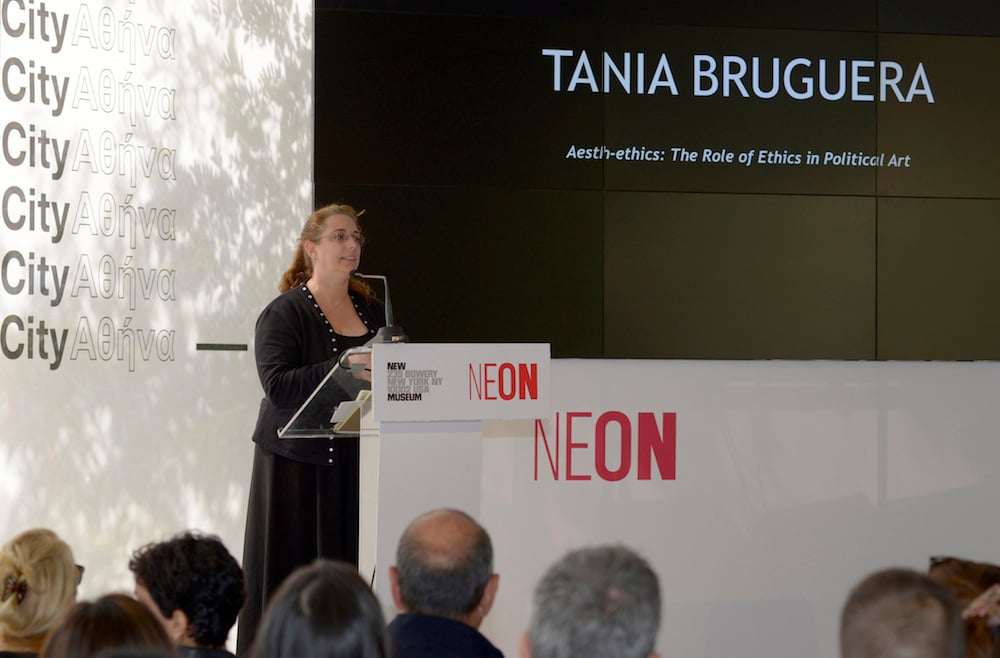
Tania Bruguera speaking at IdeasCity Athens. Photo Panos Kokkinias courtesy Neon
The forty-one fellows made camp in the newly renovated basement floor of the Athens Conservatory, for the five days of the residency, brainstorming ideas and exploring the city. Ranging from architects, artists, dancers, designers, and advertising professionals, the aim of the project is to spark relationships between these fellows that may bear fruit in the future.
Athens as a city has a very particular set of issues from dealing with the harsh fallout of the financial crisis, the impact of the many refugees that pass through the city daily, having made the precarious seaborne journey to reach Greece, and the impact on the city of many people who have had to leave in order to find work elsewhere.
If those in attendance thought people would be shying away from the big issues then they would have been disappointed. Emotions were running high throughout the conference, as both speakers and Athenians who had come to hear the results of the residencies listened intently to the ideas being discussed.
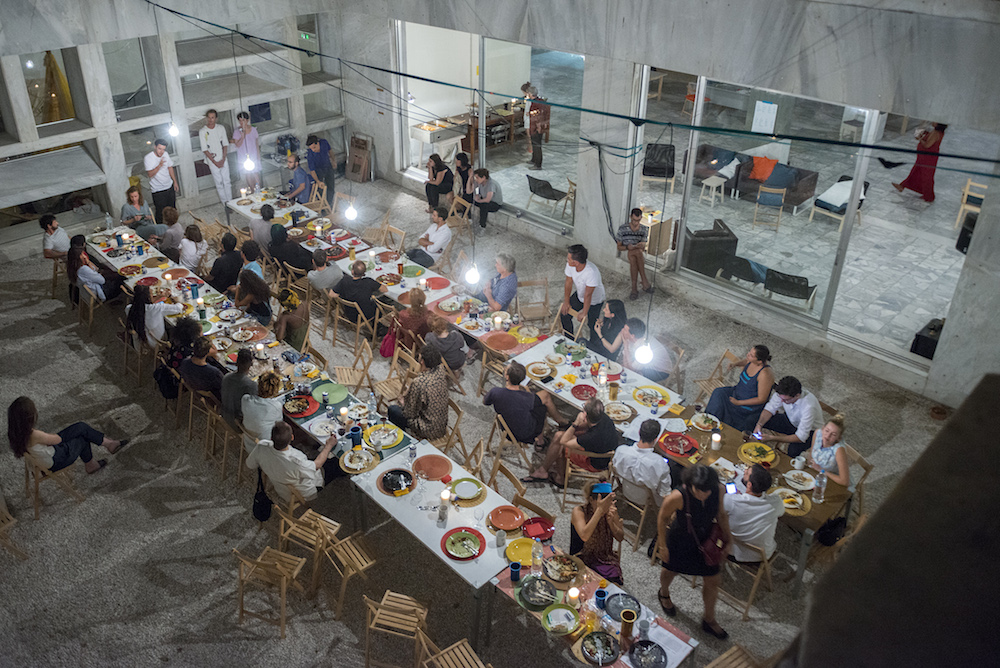
The newly renovation Athens Conservatory space where the residency took place. Photo Panos Kokkinias courtesy Neon
Lisa Phillips, the Toby Devan director of the New Museum, opened speeches on public day by explaining the thinking behind the program, followed by Neon founder Dimitris Daskalopoulos; director of Neon, Elina Kountouri; and the mayor of Athens, Giorgos Kaminis.
“Culture is not an add-on but an essential part of the vitality of the city and who we are,” she addressed the crowd. “It’s untapped capital and we’ve seen that creative practitioners can come up with imaginative ideas that we desperately need.”
The talks section then opened with Cuban artist Tania Bruguera introducing the panel discussion “Uncertain States of Sovereignty: Art, Activism, and Identity in the Post-Global City.” The panel included Pelin Tan, an architecture professor at the Artkulu University in Turkey, near the Syrian border, and Nadia Christopoulou who runs Melissa, a community space for female refugees in Athens.
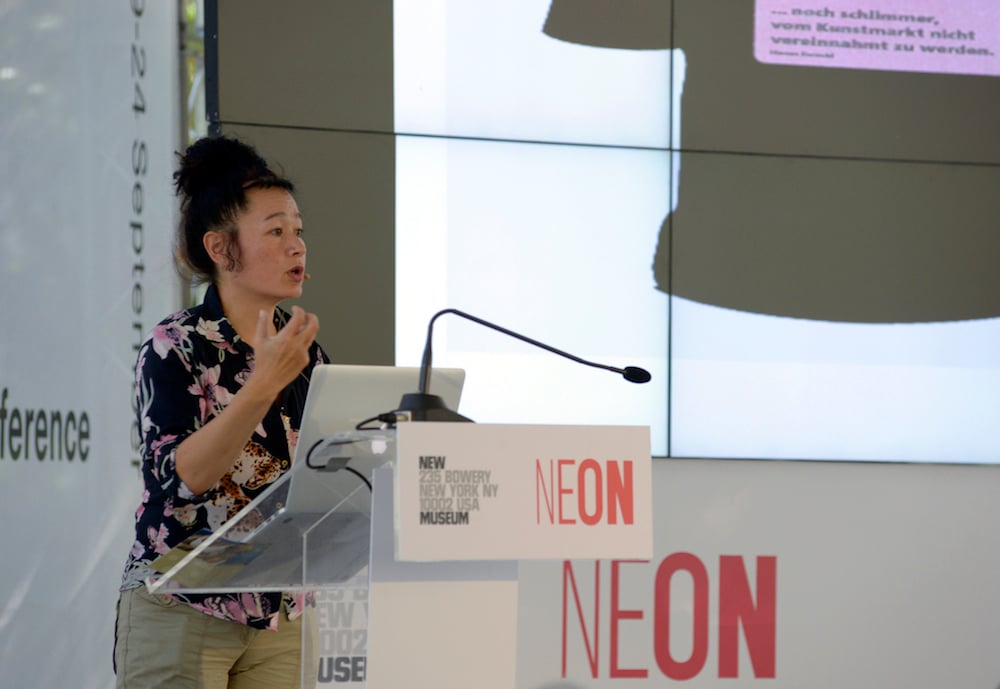
Hito Steyerl speaking at IdeasCity Athens. Photo Panos Kokkinias courtesy Neon
Bruguera spoke about the aesthetics of ethics, a mode of practice she is just trying out in English, which she emphasizes is not her mother tongue. She called for a new approach, or an art for the 21st century that addresses the issues of the modern world and also shakes off the limitations of old terminology, quoting John Cage saying “ethics are the aesthetics of the future.”
“I don’t want to talk about power, I want to have power,” she stated, discussing her exploration of the role and function of art in the world.
Next up was the introduction of all the suggestions developed by the 41 fellows—a third of whom are from Greece, a third from Europe, and a third from elsewhere—who have been working almost twenty four hours a day to come up with creative solutions for some of the issues experienced by Athenians, from homelessness to poor access to water, which Kountouri later told artnet News could well be realized. A universal theme was that five days was not enough to fully take in the unique set of problems facing the city.
Two of the best solutions presented were a mapping site which allowed people to post vacant buildings—many have been abandoned and are thus without ownership—letting those who need housing or workspace know where they can find what they need. Another was to use the many “tarps” or sheets of tarpaulin (used to cover damaged buildings) either as a canvas for artists or as a way to display information.
Filmmaker and writer dream hampton, who also took part in IdeasCity in Detroit spoke on the subject of mass incarceration in the United States, the intellectual justification of racism, and how we should see what happened in cities like Detroit and Athens as an act of financial violence, unpreventable by those who currently endure the results.
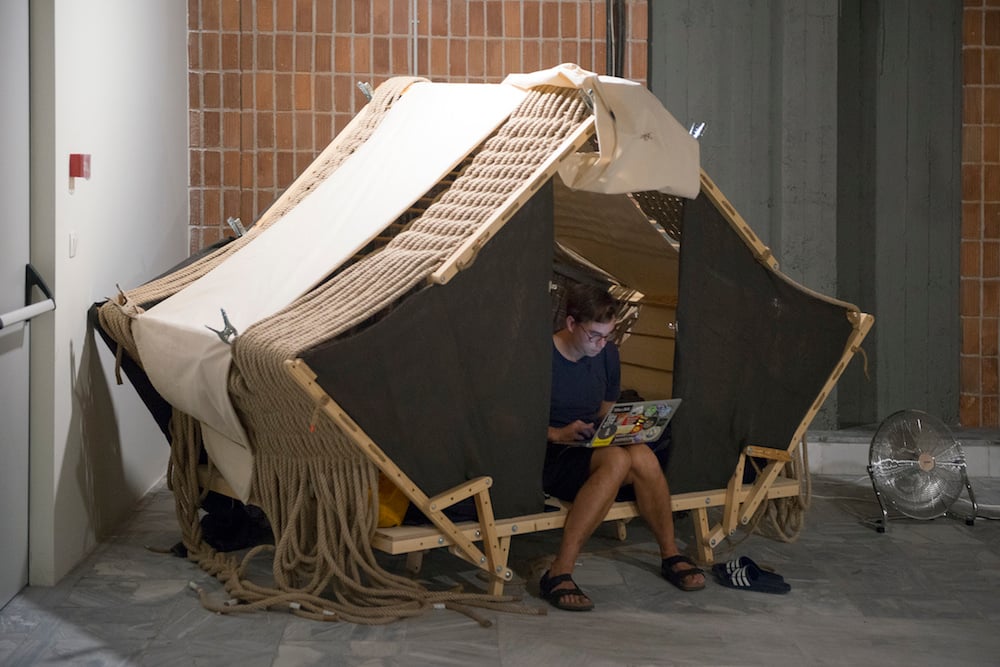
One of IdeasCity’s fellows at Athens Conservatory. Photo Panos Kokkinias courtesy Neon
Hampton’s ideas opened well for the afternoon session of the talks “Does Money Love Me Back: Art, Capital, and the Production of Space” with speakers Hito Steyerl, economist Nick Srnicek, geographer George Prevelakis, and artist Sophia Al-Maria. Here we departed from emotion and entered into the analytical with Steyerl talking us through, her work Factory of the Sun (2015) the clandestine nature of freeports, and what this means for the artworks that exist in these spaces. Srnicek spoke about a future without work, asking if capitalism isn’t the answer then what is. A shorter work week, perhaps, or even universal basic income?
Related: Hito Steyerl Questions the Primacy of Art Conservation at a Conference on Media Art
By the time the last panel has talked over dystopian shopping malls in the Middle East, future economies, and how this may relate to what is currently happening in Athens, people were truly fired up. I don’t think there was one person in the room for whom the resonance of these discussions happening in the ancient seat of democracy against the background of deep humanitarian and financial crises was lost. There was an atmosphere of both passion and of acquiesce to the unknown an unknowable.
It was then that John Akomfrah came to the stage, showing clips of a film he had made documenting the arrival of immigrants from the Caribbean to the UK in the 1940s,50s, and 60s. Akomfrah simply showed these clips and spoke of arrival of what these people, years later, had communicated to him as the strangeness of their arrival and the faith required to make the journey.
It was an emotional end to an emotional day but one was left with a sense of completeness, if not of solution.